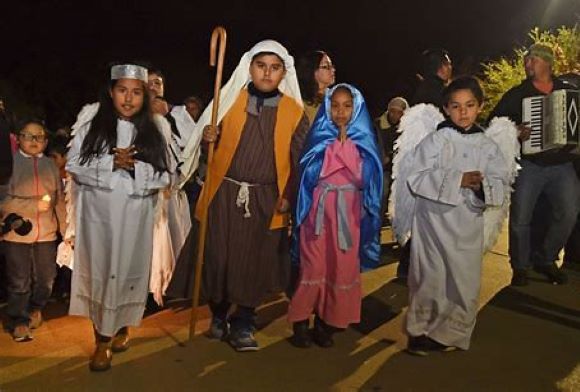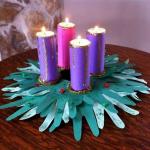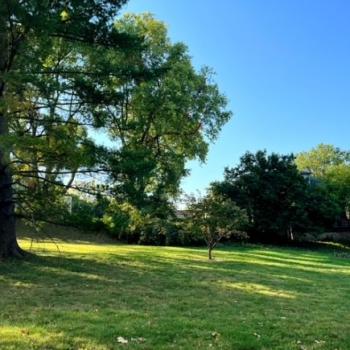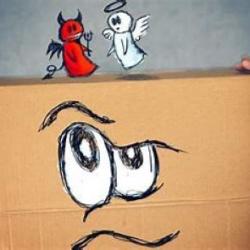ADVENT IS COMING—1 of 4—Traditions to Make it More Meaningful at Home
Advent means “to come to” or “toward” and is filled with a sense of expectation and hope. But most years, we get too busy, scattered, and jaded to allow the season to have a life of its own. In this four-part series, I give a little background and a few ideas that might help you stop, breathe, and become a part of the anticipation of Christmas.
What Is Advent?
Advent is the four-week Sunday interval directly before Christmas. It is a time of preparation and remembrance of the two comings of Jesus—the first to Bethlehem and the second at “the end of the age.” According to the United States Conference of Catholic Bishops website and the article What is Advent? | USCCB, the four weeks of Advent stand for:
- PRAYER (or the expectation of the Second Coming of Christ)
- PENANCE (and the preparation for the way of the Lord)
- JOY (in the love God has shown us)
- PREPATORY SACRIFICE AND GOOD WORKS (that we do for others).
Most churches have an evergreen wreath with three violet and one rose-colored candle to signify the four weeks. Each candle is lit during the corresponding week, anticipating the coming of the Christ child.
How Old is Advent?
Scholars confirm that Advent has existed since the 4th century and was celebrated throughout Europe. From its earliest beginnings, it tied together the first coming of the Messiah and the future second coming in one celebration. The season of Advent has always been a time of fasting, prayer, and reflection in preparation for what was to come. By the 13th century, the colors violet and rose became the standard for celebration vestments. The Advent wreath was a creation by the 16th-century German Lutheran church but was quickly adopted by most churches of the day. By the mid-19th century, the colors of violet and rose became the standard in the Advent wreath.
What Are Some Symbols of Advent?
- Advent wreath— (discussed above) has three violet candles lit on the first, second, and fourth Sundays of Advent. The rose candle is lit on the third Sunday and signifies “Gaudete!” or “Joy!”
- Crèche (cradle) or Nativity Set—a set of figurines representing Jesus being born in a stable. Saint Francis of Assisi created the first crèche in 1223 with living animals and people filling a stable in Greccio, Italy. As time has passed, the Nativity scene has become very involved, many times including all the characters of the Nativity story: Mary, Joseph, Jesus, donkeys, cattle, sheep, shepherds, angels, the three kings, and towns folk—even dogs, cats, and a Santa have been added into some scenes. The original purpose of the crèche was to educate the masses of the lowliness Jesus was born into.
- Advent Calendar—a countdown, typically from the first Sunday of Advent through Christmas Eve (December 24th). They first appeared in 19th-century Germany by using chalk markings on their doors to show the passage of time and create anticipation for Christmas. Soon, craftsmen began to build little drawer units that would hold scripture verses foretelling the arrival of the Messiah and a small prize—chocolate, toy, candy—for the children. Later, the Advent calendars became more extensive and more elaborate. More generous treats were placed in the calendar to be shared with the whole family.
- Jesse Tree—the family tree of Jesus used as a teaching tool. We meet many Biblical characters in Jesus’s lineage and its telling of God’s plan of salvation. The term “Jesse Tree” comes from Isaiah 11:1 “Then a shoot will spring from the stem of Jesse and a branch from his roots will bear fruit.” An ornament or a link on a paper chain is often made and decorated with a symbol of the ancestor and a Bible passage while learning about the Old Testament relation of Jesus. Then, the decoration is put on the Christmas tree or attached to the rest of the chain and used as a garland on the tree.
- Philip’s Fast—still a popular time of preparation in the Eastern Church. Christians of age are called to use Advent as a time of spiritual preparation. Philip’s fast, beginning on November 15 (the day after the feast day of Saint Philip, November 14), is a traditional time where you fast or abstain, adding prayers and almsgiving to your daily life. This will last for a full 40 days, up to Christmas Eve.
- Christmas Tree—an evergreen tree brought into the home, particularly from the beginning of Advent through Epiphany (January 6th). Evergreen trees symbolize eternal life and have been seen in homes for thousands of years. The modern-age winter-time tree is emblematic of several things: the Yule log and season, the tree of knowledge from the Garden of Eden, and a sign of everlasting life. The Yule log was traditionally vast and dense, with a single end placed in the fire. As it burned, the family would push it farther and farther into the blaze until it was entirely consumed. As long as the fire burned, the family would have warmth, fellowship, and light in the coldest and darkest part of the season and year. The Christmas tree tradition symbolizing “the Tree of Knowledge” came from Germany and Holland, where apples and other fruit would be hung from its boughs and then consumed from Christmas through Epiphany. The oldest and originally pagan meaning of everlasting life mingled with the Christian sense very quickly, as Jesus the Christ was born mid-winter, signifying new life even in the middle of the darkness.
- Las Posadas “The Inn” in Spanish—a nine-day celebration in many Spanish-speaking areas from December 16-24. It celebrates the journey of Mary and Joseph to Bethlehem. Usually, there is a small parade of people led by a representation of the holy couple and an angel (often depicted by children); the group processes to a string of people’s homes, where they are traditionally turned away. Refreshments are offered at the home before the group moves to another house. Many times, there is a prayer and a blessing before the journey and at each place, asking for protection over the less fortunate.
- “O” Antiphons—are chant antiphons that originated in 6th century Italy and run from December 17-23. They are traditionally sung at vespers and are chanted to the tune “Veni, Veni Emmanuel” (Oh come, oh come Emmanuel), and are now used at Mass as the Alleluia verse for the corresponding day. Each day’s first line starts as follows:
- O Sapientia (Oh Wisdom) – Dec. 17
- O Adonai (Oh Lord) – Dec. 18
- O radix Jesse (Oh root of Jesse) – Dec. 19
- O Clavis David (Oh key of David) – Dec. 20
- O Oriens (Oh morning star) – Dec. 21
- O Rex Gentium (Oh king of the nations) – Dec. 22
- O Emmanuel (Oh Emmanuel) – Dec. 23
An interesting fact is if you take the first letter of each title and print them in reverse—Emmanuel, Rex, Oriens, Clavis, Radix, Adonai, Sapientia— you get the words “Ero cras,” which means “Tomorrow, I will be [there].”
So, what are some of YOUR Advent Traditions? I love hearing your stories! Happy Advent Season!














